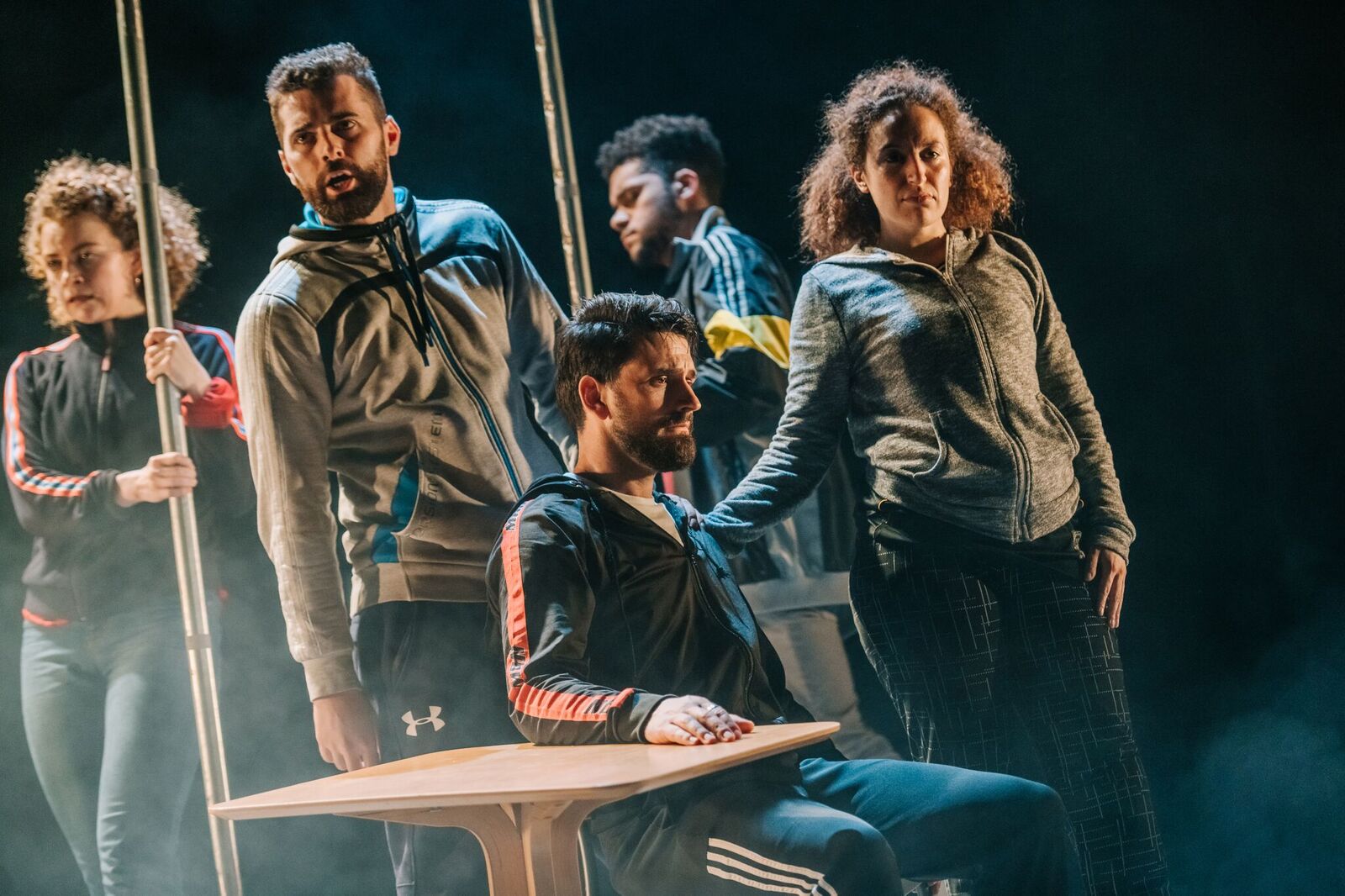When we read or see news about asylum seekers or illegal immigrants coming to the UK or into Europe, in the media much of the attention is about the crossing these individuals must make. In interviews, refugees talk about the better life they hope to have and the risk they are willing to take to make that often treacherous voyage. In spite of the title, Nicola McCartney and Dritan Kastrati’s How Not to Drown is not so much about surviving the journey but adjusting to life once that destination has been reached.
Retracing the footsteps of Kastrati – who at 11 years old was sent away from Kosovo by his father to England to be with his older brother, Alfred – the play tracks his precarious journey across Europe, only for the UK’s immigration and social services to intervene and separate them both shortly after his arrival. The second half of the play exposes the callous, bureaucratic handling of young asylum seekers by UK authorities, highlighting how they are let down by the rigid, uncompromising systems currently in place.
Although Kastrati plays a key role in telling his story, he is not the only Dritan we get to know. The intimate five-person cast move between roles – with Ajjaz Awad and Reuben Joseph often stepping in and assuming Kastrati’s role with ease. This allows Kastrati to become a witness to his own experiences, reflecting upon the decisions he and those around him made back in 2002. In sharing his voice and thoughts with his fellow performers, Kastrati’s vulnerability and confusion as a young boy is beautifully conveyed – particularly in moments of angst and helplessness – as he struggles with his own identity and idea of family.
With such a great story to tell, McCartney are Kastrati are smart in keeping the action fast-paced. Not forgetting he is only just turning a teenager, Kastrati’s cheek and cocky attitude elicits many laughs from the audience – though the amount of swearing becomes a little waring in spite of it seemingly being the norm for kids to swear nowadays. This humour doesn’t detract from the fact that How Not to Drown is an incredibly demanding piece of theatre – not only in terms of the multiple character-changes but also in its physicality. As young Kastrati makes his way to England, we are right there with him as he sits there huddled in a crowded lorry or is holding on for dear life in a boat, waves crashing against the sides of the ferry. The cast do an excellent job in creating a tense atmosphere, fuelled by the audience’s worry for Kastrati (even though he is right there before us onstage). Their use of the precarious-looking, revolving stage and their delivery of Jonnie Riordan’s choreography in scenes of crises makes for excellent physical theatre.
There are some setbacks that inhibit How Not to Drown from being truly exceptional. With only five actors playing 30 different speaking roles alone, it’s perhaps unsurprising that there isn’t much differentiation between all the characters, though disappointing all the same. It’s also interesting that McCartney and Kastrati choose to end the play where they do – leaving us to wonder how Kastrati came to be an actor performing at the Edinburgh Festival Fringe.
What should be taken away from How Not to Drown is how resilient mankind can be, no matter how old they are or where they are from. It reveals the shameful mistreatment of young, vulnerable individuals whose real needs are overshadowed by detached legislation. Above all, ThickSkin’s production will leave you thinking about your own family, and how lucky you are to have a place to call home.
